
The big-eared woolly bat or (Peters's) woolly false vampire bat is a species of bat, belonging to the family Phyllostomidae.
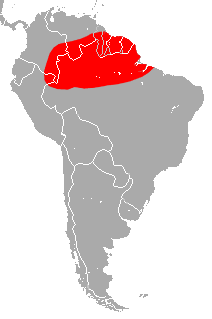
The lesser ghost bat is a bat species found in South America. It is one of six bat species worldwide to have white fur.

The lesser sac-winged bat or lesser white-lined bat is a bat species of the family Emballonuridae from South and Middle America.

The Argentine brown bat, is a bat species from South and Central America.

The black myotis is a vesper bat species from South and Central America.

The fringed fruit-eating bat, is a species of bat native to South America.
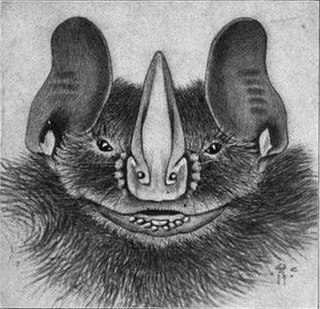
The silver fruit-eating bat is a South American bat species of the family Phyllostomidae.

The tent-making bat is an American leaf-nosed bat (Phyllostomidae) found in lowland forests of Central and South America. This medium-sized bat has a gray coat with a pale white stripe running down the middle of the back. Its face is characterized by a fleshy noseleaf and four white stripes. Primarily a frugivore, it may supplement its diet with insects, flower parts, pollen, and nectar. Its common name comes from its curious behavior of constructing tents out of large, fan-shaped leaves. These roosts provide excellent protection from the tropical rains, and a single tent roost may house several bats at once. This bat is quite common in its geographic range; hence, its conservation status is listed as Least Concern.

The little goblin bat is a species of bat in the family Molossidae, the free-tailed bats. It is endemic to Cuba.

The Toltec fruit-eating bat is a species of bat in the family Phyllostomidae. It is also sometimes called the "lowland fruit eating bat."

Uroderma is a genus of Central and South American phyllostomid bats.

The Mexican dog-faced bat is a bat species of the family Molossidae from Central America. It is found from Nayarit in Mexico to Costa Rica at elevations up to 1500 m. It was formerly considered a subspecies of C. greenhalli. It roosts in deciduous and evergreen forest, and is usually found near small bodies of water.
The pygmy bamboo bat is a species of vesper bat in the family Vespertilionidae. It is found in Southwest China and was discovered in 2007. The species is around 4 cm long and weighs between 2.6 and 3.5 grams.
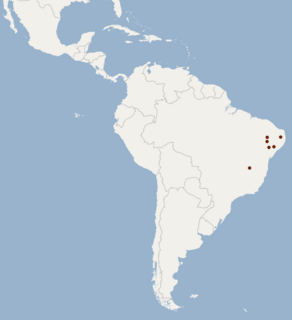
Vieira's long-tongued bat is a species of bat from northeastern Brazil, discovered in 2005 by Gregorin and Ditchfield. It is the only species in the genus Xeronycteris.

The Mistratoan yellow-shouldered bat, is a species of leaf-nosed bat indigenous to the Cordillera Occidental, in the Mistrato municipality in Risaralda, Colombia. Since existing information derives exclusively from the holotype, the status of the species, its environmental requirements, and the trend of the population are unknown.
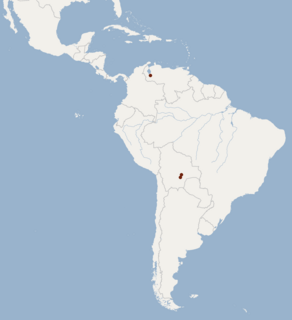
Soriano's yellow-shouldered bat, is an extant species of leaf-nosed bat indigenous to Bolivia and Venezuela, although its precise distribution is uncertain. Following the postulation of the species in 2005, S. sorianoi requires contemporary information relating its distribution, environment, and population, along with formal a comparison with S. erythromos and S. bogotensis. Without sufficient data, the International Union for Conservation of Nature (IUCN) presently considers the taxonomy for S. sorianoi as incomplete.
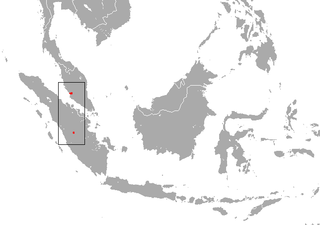
The orbiculus leaf-nosed bat, also known as the orbiculus roundleaf bat and small disc roundleaf bat, is a species of bat from the family Hipposideridae. The species has been found on the island of Sumatra in Indonesia and on peninsular Malaysia.

Thomas's big-eared brown bat is a species of vesper bat found in South America.

Orcés’s long-tongued bat is a species of leaf-nosed bat found in Ecuador.



















